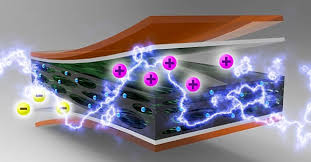Graphene- based ballistic dipole nano-transistors and 3D-dimensional nano-transistors (structure and structure) based on nano-microelectronics (PhD)
Researcher and author: Engineer Afshin Rashid
Note: Due to the very small thickness of graphene, it is possible to greatly reduce the gate length in its (ballistic dipole nano-transistors) field effect without encountering common problems in 3D nano-transistors.
In 3D nano-tube transistors, the very high electron movement in graphene promises to have a threshold frequency as well as greater mobility in the circuit. The major advantage of the 2D ballistic transistor transistor devices is their very small and desirable power- delay processing criteria , which is calculated to be below 10 fJ. Apart from graphene, other materials with two-dimensional structure have also been discovered, including silicon and germanium . There are also ideas for making 2D dimensional tubular nano transistors using phosphorene and graphene . But conventional ballistic 3D nano-transistors , however, are far too slow to build, and their switching times range from a few tens of milliseconds, limiting their use to frequencies of several kHz.
Other than bipolar ballistic nano-transistors and conventional field effect , there are other ideas for using graphene or other 2D materials in transistor construction . One of these ideas is a 2D nano-transistor tunnel effect that has an optimum speed of up to a few GHz, low power consumption, and further drain current variations . Gate voltage nano-devices are also designed and manufactured in the sub-threshold region such as ballistic dipole transistors, as well as optical devices based on graphene or other available 2D materials.
Nano-tubular transistors are 2-dimensional tubes with graphene walls. These tubes can be single-walled or multi-walled as in structure . On the other hand, depending on how the carbon atoms are wrapped and arranged at the edge of the tube, they are found in three forms (chair, zig-zag and tube-like chiral) . These three forms of carbon nanotubes have very different properties. For example, the armchair structure behaves like a metal conductor, whereas the chiral nanotube structure has a semiconductor behavior , and this is coordinated by a small matching of the gap energy with 2D carbon nanotubes. The unique electrical and mechanical properties also give the 3D nano-tube transistor.
The main problem with the use of nanotubes in the manufacture of 3D ballistic nano-transistors is mainly that they have to be used on the surface to be bonded and metal-bonded to achieve transistor behavior. Vertical nanotubes, however, are more likely to grow with the proliferation of 3D ballistic nano-transistors. It is assumed that semiconductor and metallic nanotubes can be accurately grown and orientated on the surface, enabling the electronics to be compressed and accelerated more rapidly.





